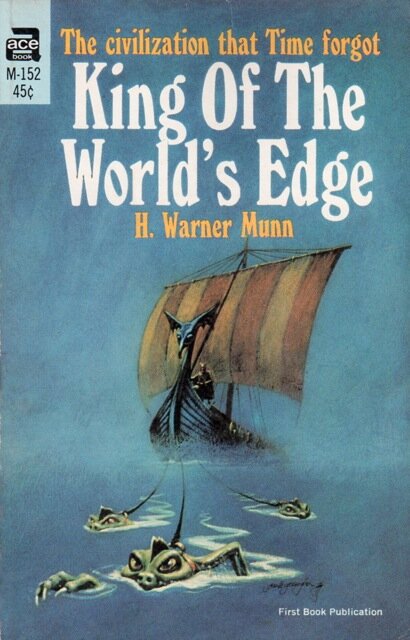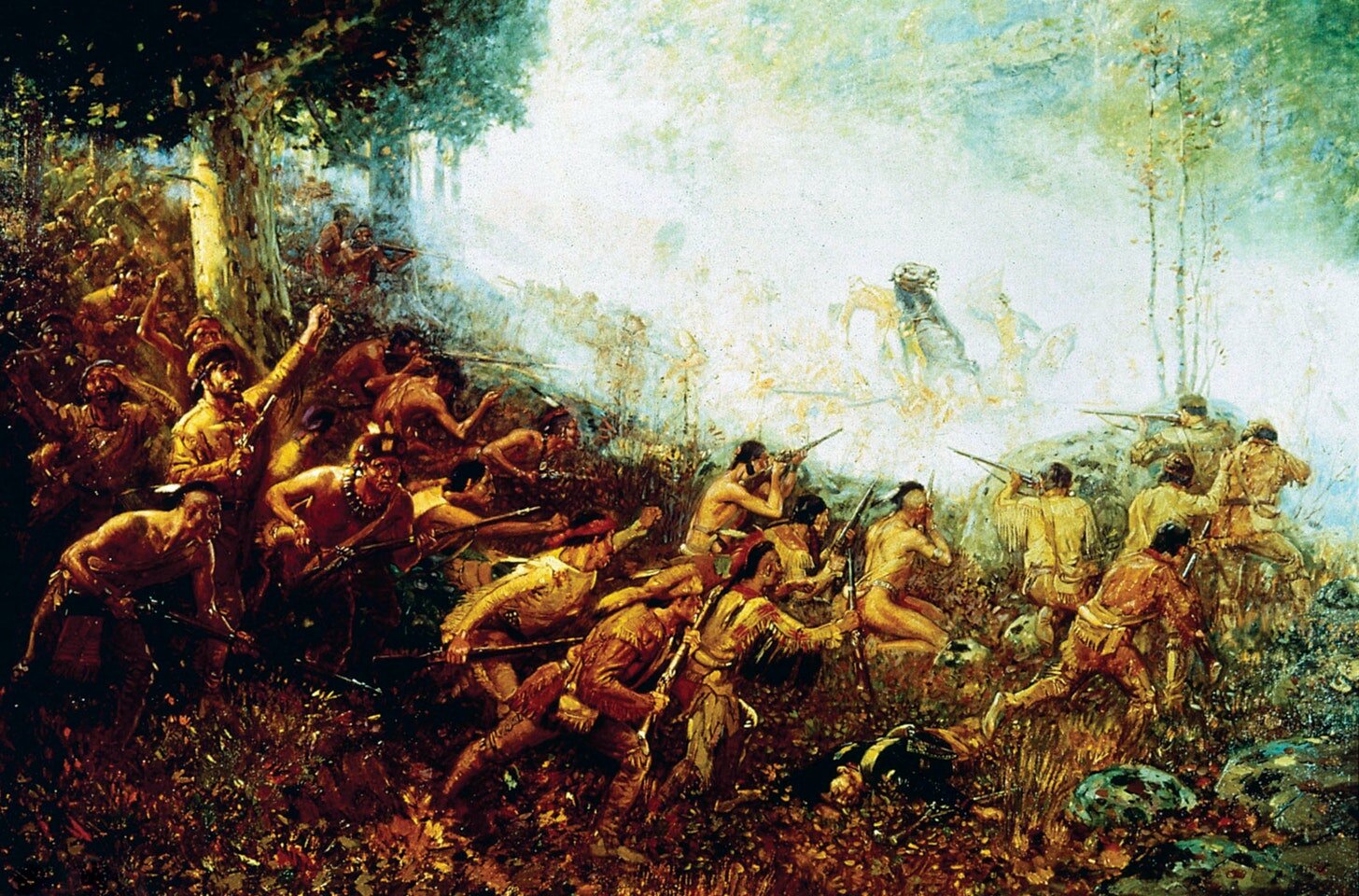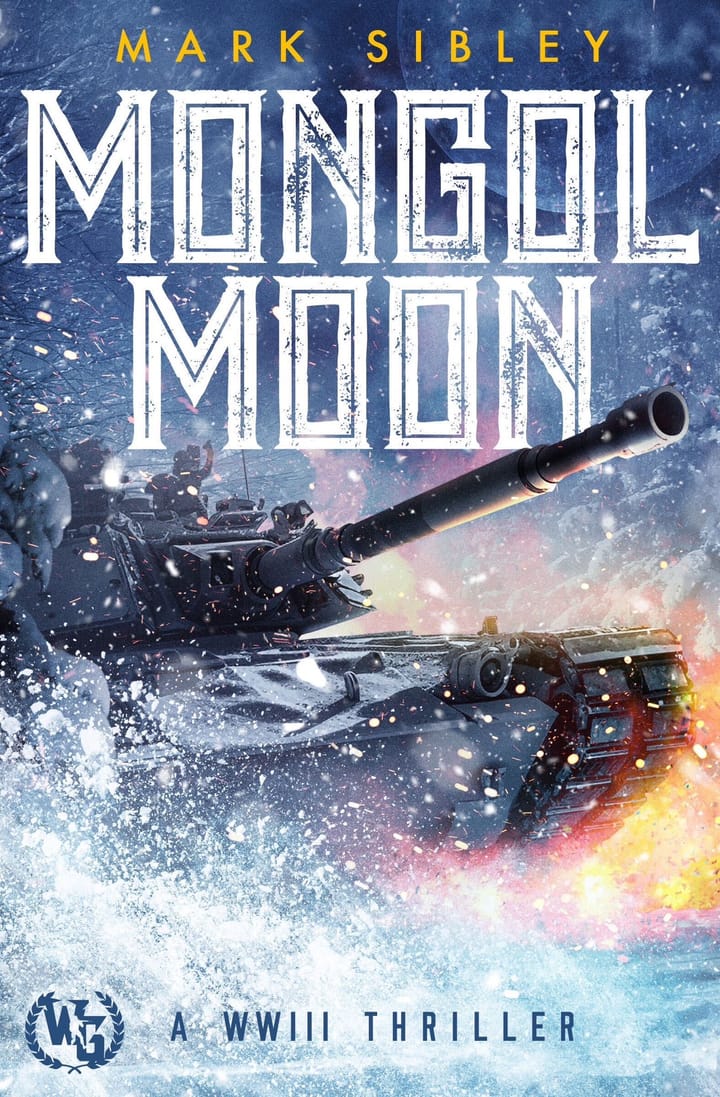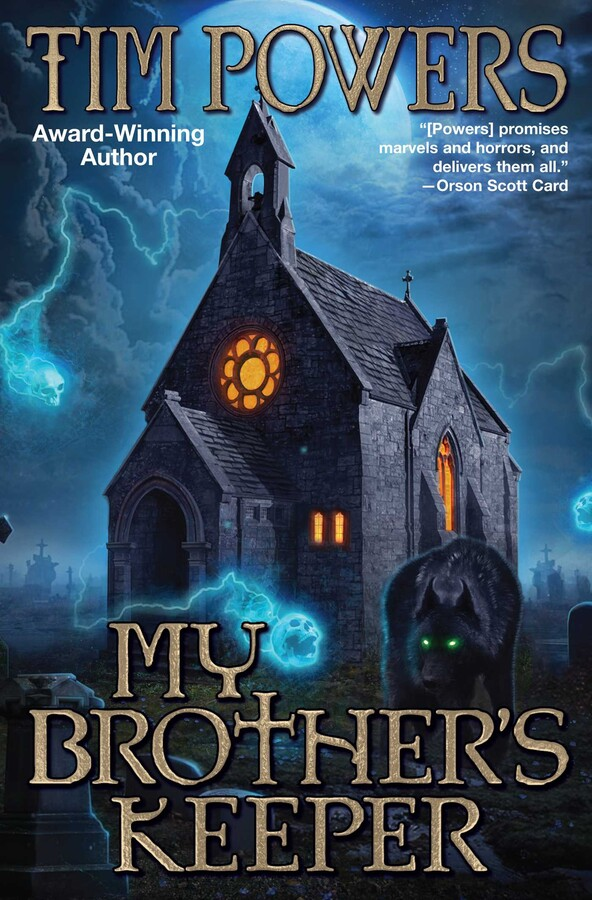King of the World's Edge by H. Warner Munn Book Review
King of the World’s Edge by H. Warner Munn [Amazon link] is truly a pulp era story, first serialized in Weird Tales in September of 1939. A bold tale with massive scope, this is an alternative history of both the Americas and the last remnants of Romano-Britain that works in myth and legend from two continents. It holds up pretty well eighty-two years later.

The King of the World’s Edge by H. Warner Munn
I picked this book up because of a blog post by Paul Lucas. Lucas wrote up a compelling review of Munn’s book, so when I saw the collected paperback version with King of the World’s Edge and The Ship From Atlantis titled Merlin’s Godson [Amazon link] at a used bookstore, I picked it up immediately.
The King of the World’s Edge hits a lot of my interests: alternative history, Arthurian legends, the archaeology and anthropology of pre-Columbian America. The opening of the book, as Lucas notes, is a succinct retelling of a modern take on King Arthur as the last of the Romano-Britons. I can easily imagine that this is one of the versions of the tale that Tim Powers had in mind when he wrote The Drawing of the Dark or Last Call, participating in that Great Conversation that makes the kind of adventure story I like more than merely disposable entertainment.

After Ventidius Varro, the last of Arthur’s centurions, and Myrdhinn, the mage of reknown, escape the ruin of Arthur’s doomed attempt to unite Britain, Munn’s story then borrows heavily from Bernal Diaz’ The Conquest of New Spain [Amazon link], especially the early Expedition of Francisco Hernandez de Córdoba that was the first contact between the peoples of the Yucatan and the Spanish. The sequence of events and locations in Munn’s book when the Romans approach the New World is nearly the same, except that Córdoba’s men weren’t run off by frog men.
By luck, I had been reading Diaz’ account at the same time as King of the World’s Edge, and was thus able to clearly see this narrative debt. While I prefer to read fiction over non-fiction for pleasure, I’ve found that adding in some relevant historical works leavens my appreciation of popular fiction like this considerably. Pulp fiction in my experience has a pretty thorough grounding in real events and real people, and I’ve often read something later that gave me an “Aha!” moment when a reference was unfamiliar.
For example, reading Ross Douthat’s NY Times editorial and followup Substack on the French & Indian War, and in particular his account on how the defeat of General Braddock at Fort William Henry and the subsequent massacre of the survivors by the native allies of the French general Montcalm was a key turning point in the war, and in history, I was struck by how Munn described war in his fictional pre-Columbian America in much the same way as it was waged in the sixteenth century. The behavior and motives of the combatants were much the same. Which is not implausible.

But a work like this is not just aiming for historic verisimilitude, but also at mythic resonance. I was particularly interested in Munn’s take on the legends of Aztlan, the northern home of the Aztecs, having seen Jerry Pournelle and Larry Niven’s version of it in Burning Tower. I had wondered why Niven and Pournelle had included an Arthur-type character in that story. Maybe they were harkening back to King of the World’s Edge.
In Munn’s telling, the remarkable and horrifying civilization of the Aztecs was partly due to an inheritance from these voyagers. The war-like Varro gave them some of the Roman genius for war, and the wise and learned Myrdhinn gifted them arts, science, and less successfully, Christianity. Varro’s influence found better and more receptive soil in which to take root, and so warfare dominated the destiny of the Aztecs.
![Snake MoundBy Ephraim George Squier and Edwin Hamilton Davis - Ancient Monuments of the Mississippi Valley at [1], Public Domain, https://commons.wikimedia.org/w/index.php?curid=33578862](https://www.benespen.com/content/images/content/v1/51259dfce4b01b12552dad3e/1627518382696-NPKCLHF3PNKM5JS2GJKP/791px-sd35_serpent_mound_squier_and_davis_plate_xxxv_gray-levels-cropped.png)
Snake Mound
By Ephraim George Squier and Edwin Hamilton Davis - Ancient Monuments of the Mississippi Valley at [1], Public Domain, https://commons.wikimedia.org/w/index.php?curid=33578862
All of the other peoples that come into contact with Varro and Myrdhinn are also changed by the experience. From the formation of the Peoples of the Long House to the downfall of the mound builders of the Ohio river valley, Munn does a remarkable job keeping the story moving with all of this going on. The book covers many years, from the flight of the last Legions of Britain to the culmination of Varro and Myrdhinn’s coalition- and nation-building in a climatic battle.
Modern epic fantasy would tell this kind of story in several volumes each approaching a thousand pages. Munn does it in less than two hundred. Lots of details that are now common get skipped, but I admire the pacing that makes this possible. In a way, the story is all the grander for being so short. Contemporary books are longer because they just include more quotidian details, which are not particularly mythic.
There are another two books that Munn wrote over the decades of his long career in this world, I’m curious to see where he takes it from here.
My other book reviews | Reading Log
Other Pulp Adventures
Adam Lane Smith Gideon Ira: Knight of the Blood Cross
JD Cowan Someone is Aiming for You
Daniel Humphreys Fade: Paxton Locke
Appendix N
A. Merritt. The Moon Pool
Leigh Brackett. The Coming of the Terrans
C. L. Moore. The Best of C. L. Moore
Robert E. Howard. The Savage Tales of Solomon Kane
Fritz Leiber Ill Met in Lankhmar
H. Beam Piper Space Viking
H. Beam Piper Lord Kalvan of Otherwhen
Robert E. Howard The Savage Tales of Soloman Kane
Jack Vance The Dying Earth



Comments ()